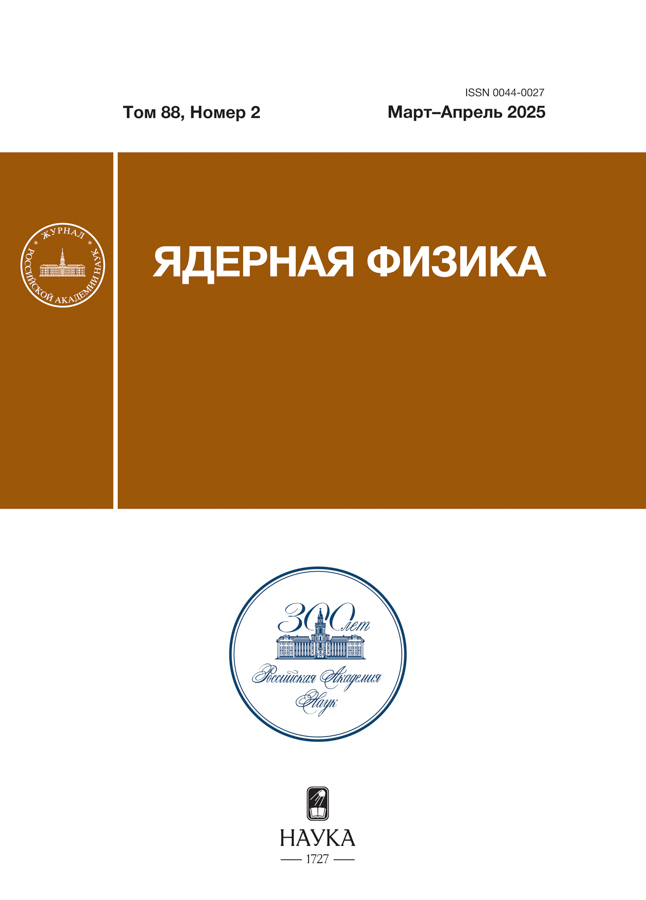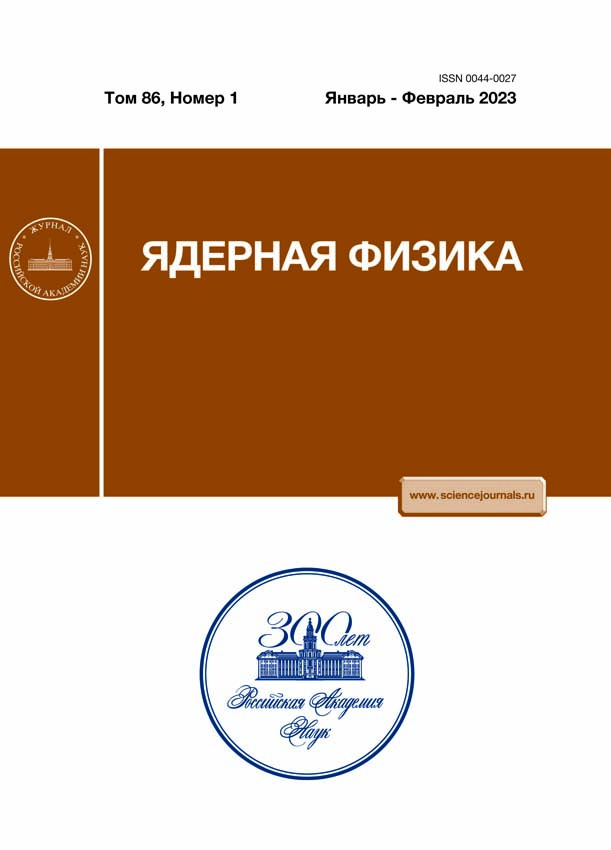ПЕРСПЕКТИВЫ ПРИМЕНЕНИЯ НЕОРГАНИЧЕСКИХ СЦИНТИЛЛЯЦИОННЫХ КРИСТАЛЛОВ GAGG В ЭЛЕКТРОМАГНИТНОЙ КАЛОРИМЕТРИИ
- Авторы: Аверьянов Д.А.1,2, Блау Д.С.1,2, Цывкунова Е.А.2
-
Учреждения:
- НИЦ ‘‘Курчатовский институт’’
- Московский физико-технический институт (националь- ный исследовательский университет)
- Выпуск: Том 86, № 1 (2023)
- Страницы: 192-203
- Раздел: МАТЕРИАЛЫ LXXII МЕЖДУНАРОДНОЙ КОНФЕРЕНЦИИ “ЯДРО-2022: ФУНДАМЕНТАЛЬНЫЕ ВОПРОСЫ И ПРИЛОЖЕНИЯ”. Элементарные частицы и поля. Эксперимент
- Статья опубликована: 01.03.2023
- URL: https://cardiosomatics.ru/0044-0027/article/view/674761
- DOI: https://doi.org/10.31857/S0044002723010051
- EDN: https://elibrary.ru/QZGKZI
- ID: 674761
Цитировать
Полный текст
Аннотация
Сцинтилляционные кристаллы Gd\({}_{3}\)Al\({}_{2}\)Ga\({}_{3}\)O\({}_{12}\) (GAGG) рассматриваются в качестве материала для применения в детекторах ионизирующих излучений в связи с их высокой радиационной стойкостью, плотностью и световыходом. Эти кристаллы могут быть использованы в дополнение к кристаллам вольфрамата свинца (PbWO\({}_{4}\) или PWO) для создания электромагнитного калориметра нового поколения с хорошим пространственным и энергетическим разрешением в широком диапазоне энергий. Кристаллы PWO позволяют точно измерять энергию фотонов высокой энергии, а добавление перед ними кристаллов GAGG позволяет расширить диапазон измеряемой энергии фотонов вплоть до нескольких МэВ. Нами рассмотрены различные варианты составного электромагнитного калориметра на основе кристаллов PWO и GAGG для оптимизации его пространственного и энергетического разрешения в широком диапазоне энергии (от 1 МэВ до 100 ГэВ). Оптимизация основана на моделировании в Geant4 с учетом светосбора, а также с использованием различных фотодетекторов и шума электроники. Результаты моделирования проверялись с использованием измерений световыхода образцов GAGG, проведенных с помощью радиоактивных источников, и измерений на тестовом пучке состоящего из кристаллов PWO фотонного спектрометра PHOS эксперимента ALICE в ЦЕРН.
Об авторах
Д. А. Аверьянов
НИЦ ‘‘Курчатовский институт’’; Московский физико-технический институт (националь- ный исследовательский университет)
Email: daver99@yandex.ru
Россия, Москва; Россия, Долгопрудный
Д. С. Блау
НИЦ ‘‘Курчатовский институт’’; Московский физико-технический институт (националь- ный исследовательский университет)
Email: daver99@yandex.ru
Россия, Москва; Россия, Долгопрудный
Е. А. Цывкунова
Московский физико-технический институт (националь- ный исследовательский университет)
Автор, ответственный за переписку.
Email: daver99@yandex.ru
Россия, Москва
Список литературы
- G. Dellacasa et al. (ALICE Collab.), CERN-LHCC-99-04.
- ALICE Collab., J. Phys. G: Nucl. Part. Phys. 32, 1295 (2006).
- CMS Collab., J. Phys. G: Nucl. Part. Phys. 34, 995 (2007).
- CALET Collab., Nucl. Phys. B Proc. Suppl. 256–257, 225 (2014).
- S. Acharya et al. (ALICE Collab.), JINST 14, P05025 (2019).
- M. M. Aggarwal et al. (ALICE Collab.), Phys. Lett. B 754, 235 (2016).
- A. Adare et al. (PHENIX Collab.), Phys. Rev. C 94, 064901 (2016).
- R. H. Brown and R. Q. Twiss, Nature 177, 27 (1956).
- M. M. Aggarwal et al. (WA98 Collab.), Phys. Rev. Lett. 93, 022301 (2004).
- F. Low, Phys. Rev. 110, 974 (1958).
- P. Abreu et al. (The DELPHI Collab.), Eur. Phys. J. C 47, 273 (2006).
- J. Antos et al., Z. Phys. C 59, 547 (1993).
- https://en.newpiezo.com/products/scintillation_ele- ments/
- T. Furuno et al., JINST 16, P10012 (2021).
- K. Kamada, T. Yanagida, et al., IEEE Trans. Nucl. Sci. 59(5), 2112 (2015).
- https://www.crytur.cz/materials/
- В. Н. Евдокимов и др., Препринт 86-34, ИФВЭ (Серпухов, 1986).
- S. Agostinelli et al. (Geant4 Collab.), Nucl. Instrum. Methods Phys. Res. A 506, 250 (2003).
- D. V. Aleksandrov et al., Nucl. Instrum. Methods Phys. Res. A 550, 169 (2005).
- C. W. Fabjan et al. (ALICE Collab.), J. Phys. G 32, 1295 (2006).
- J. E. Gaiser, SLAC-R-255 (1982).
Дополнительные файлы











